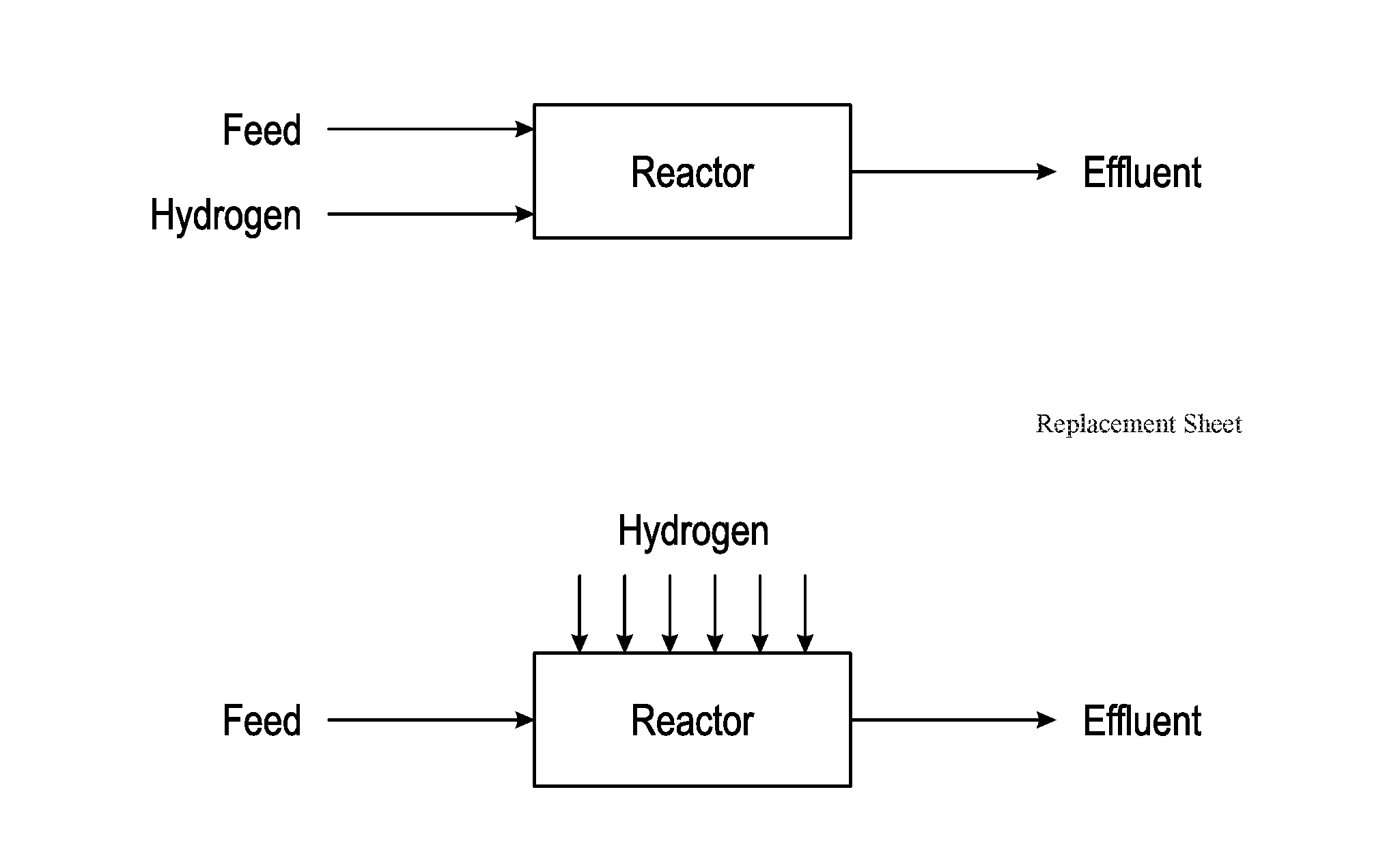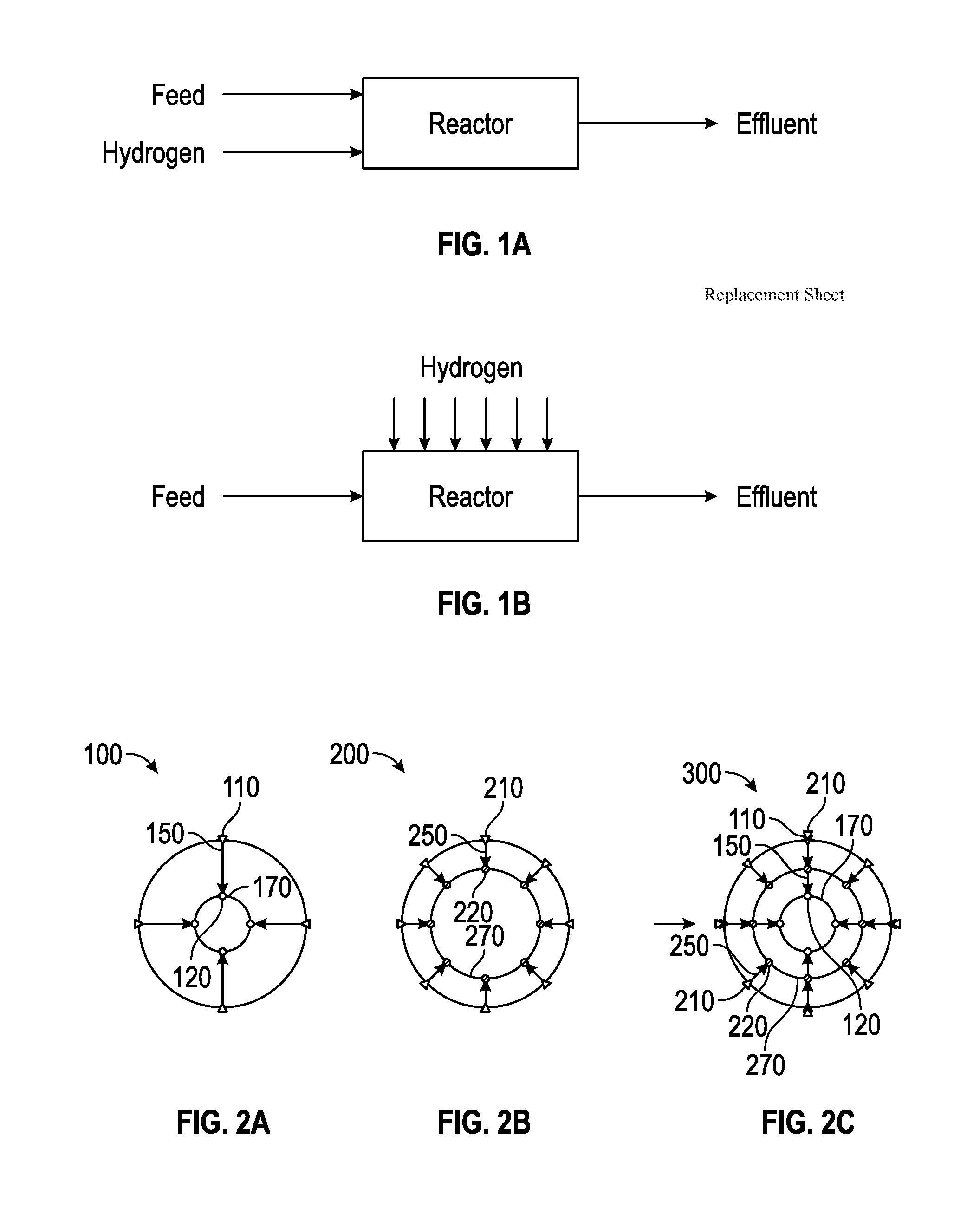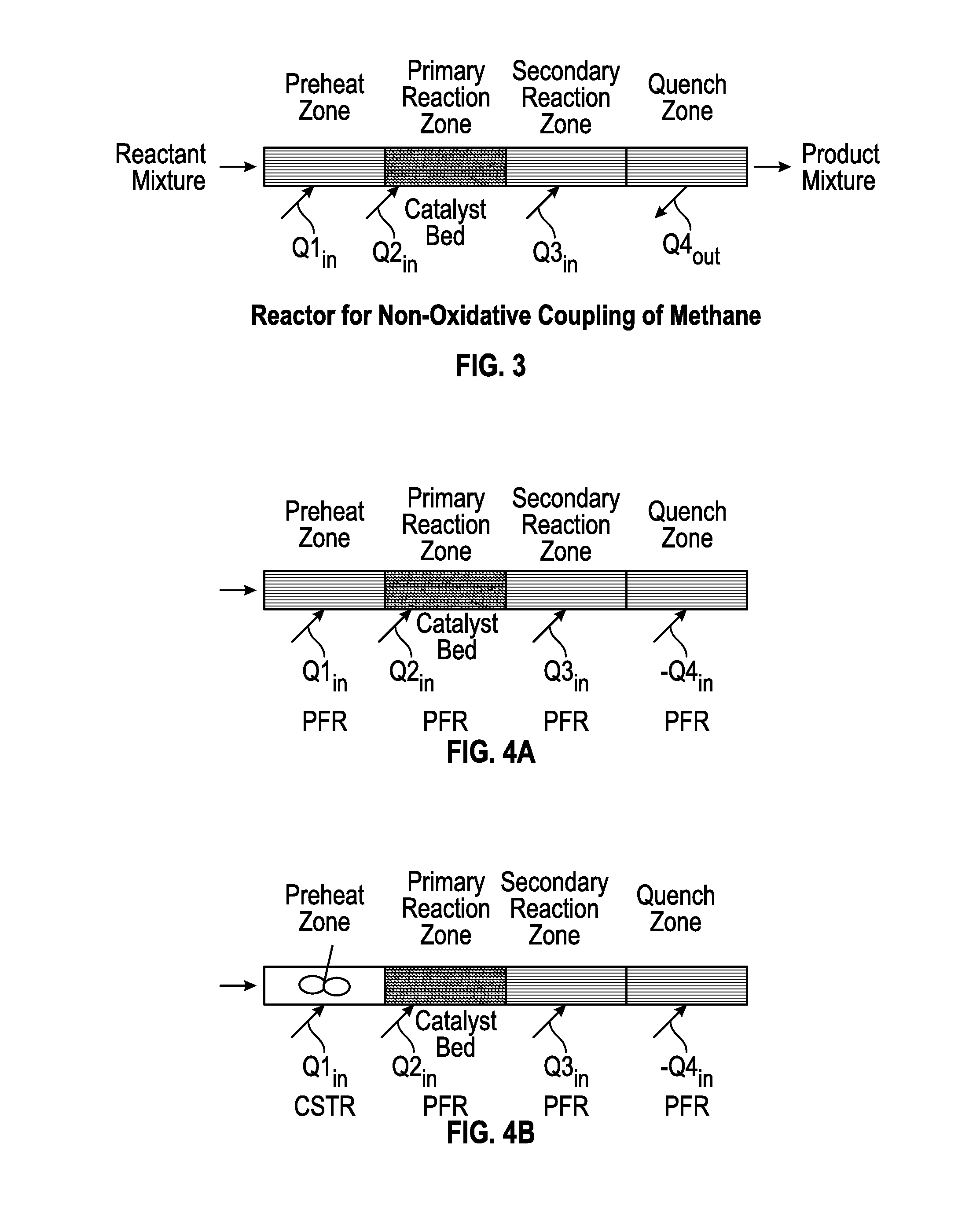Method for Producing Hydrocarbons by Non-Oxidative Coupling of Methane
a non-oxidative coupling and hydrocarbon technology, applied in the field of hydrocarbon production methods, can solve the problems of difficult activation of methane and its selective conversion to chemicals and fuels, and large increase in catalyst bed temperatur
- Summary
- Abstract
- Description
- Claims
- Application Information
AI Technical Summary
Benefits of technology
Problems solved by technology
Method used
Image
Examples
example 1
[0251]The formation of methyl radicals in a non-oxidative coupling of methane reaction a reactor was mathematically modeled by using a Roscoe-Thompson mechanism for calculating concentration-time profiles, as described in more detail in J. Phys. Chem. 1990, 94, 1432-1439, which is incorporated by reference herein in its entirety. The kinetics of .CH3 accumulation were considered for the model. The experimental data were also compared with the results from the model, indicating that at conditions which were used experimentally (4.1 seconds reactor residence time, 0.03 seconds catalyst zone contact time (e.g., residence time of the chemical species in the catalyst bed)), product distribution fits the model used for prediction of experimental data.
[0252]The results of the modeling are displayed in FIGS. 10A-G. These modeling results show that the release of methyl radicals into the gas phase can lead to high methane conversions at 1030° C. The various curves are representative of metha...
example 2
[0254]Non-oxidative coupling of methane reactions were investigated for fine catalyst particles in a continuous flow, fixed bed reactor with an internal volume of 0.117 mL, wherein the fixed catalyst bed was a thin bed with a 3-4 mm bed length. 0.1 g of fine catalyst particles (e.g., fused Fe2SiO4 / SiO2 fine powder) with an average size of 400-635 mesh was packed in the primary reaction zone of the reactor on a bed of quartz wool / felt, unless otherwise stated. The reactor was heated to 950° C. under Ar and then the feed gas was turned on at the appropriate flowrate. The catalyst was activated under these conditions for two hours before introducing a reactant mixture to the reactor. A feed gas (reactant mixture) contained 90 vol. % CH4 and 10 vol. % N2, wherein the N2 in the feed gas was used as internal standard. The effluent composition (product mixture) was monitored by an online Gas Chromatography (GC) (Agilent 7890B), equipped with a flame ionization detector (FID) with CP-Silica...
example 3
[0256]Non-oxidative coupling of methane reactions were investigated for fine catalyst particles as described in Example 2, but with thicker catalyst beds of about 1.5-2 cm. Eight different catalyst samples in their fine powder forms (>400 mesh) were tested with thicker catalyst bed length (1.5-2 cm), and the data are displayed in Table 4.
TABLE 4CatalystBed lengthMaxTotal HCSample #(cm)conversionSelectivityethyleneacetylenebenzenenaphthalene1211.032.215.76.24.30.521.57.733.419.15.52.20.031.510.724.814.44.02.10.041.57.626.417.13.21.40.051.56.233.118.15.42.00.061.57.026.216.43.81.00.071.512.412.47.82.30.40.081.54.029.819.20.51.40.0
[0257]All samples in Table 4 displayed substantially lower hydrocarbon selectivity and more losses to heavier hydrocarbons and coke as compared to Example 2, which investigated a thinner catalyst bed length. This clearly demonstrates that catalyst bed length is an important factor in the process design. Catalyst bed length affects the radical propagation proc...
PUM
| Property | Measurement | Unit |
|---|---|---|
| temperature | aaaaa | aaaaa |
| temperature | aaaaa | aaaaa |
| residence time | aaaaa | aaaaa |
Abstract
Description
Claims
Application Information
 Login to View More
Login to View More - R&D
- Intellectual Property
- Life Sciences
- Materials
- Tech Scout
- Unparalleled Data Quality
- Higher Quality Content
- 60% Fewer Hallucinations
Browse by: Latest US Patents, China's latest patents, Technical Efficacy Thesaurus, Application Domain, Technology Topic, Popular Technical Reports.
© 2025 PatSnap. All rights reserved.Legal|Privacy policy|Modern Slavery Act Transparency Statement|Sitemap|About US| Contact US: help@patsnap.com



